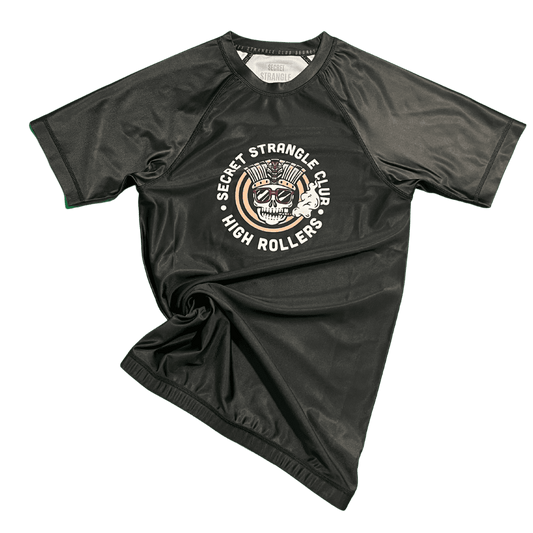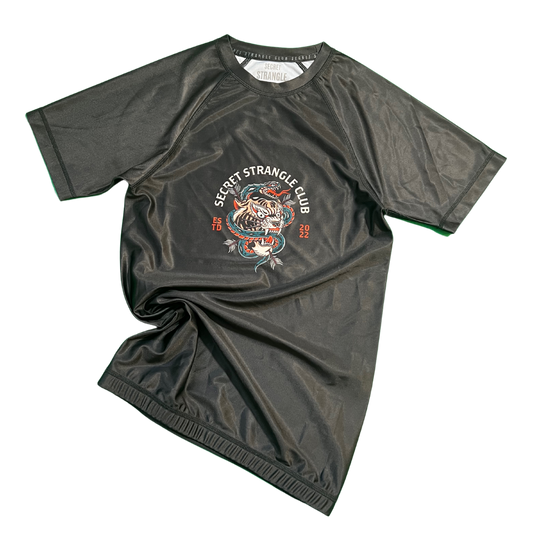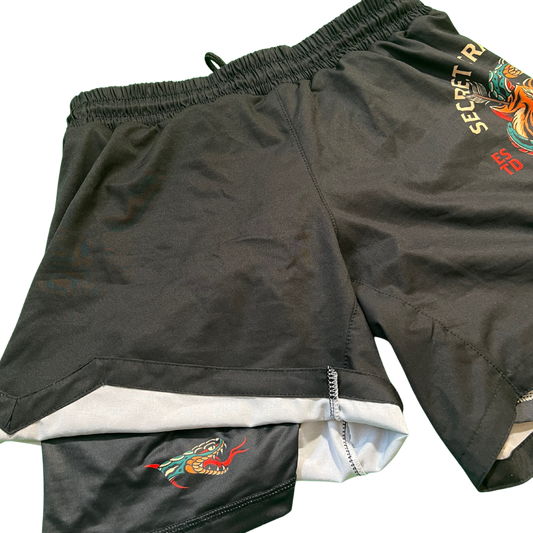* Blog Disclaimer: As always, this blog is an opinion, from the author.. not gospel, don’t get ya gi pants in a twist. Oss
We’re going to look at the basic principles of the closed guard, and what you can do to improve your game from the bottom position in gi BJJ, no-gi, or self-defense.
Let’s dive in:
Posture Control
The closed guard does not exist in any strong capacity without posture control.
This is why the first and most important principle of a good closed guard is to have posture control over your opponent.
In gi Jiu-Jitsu, posture is typically broken and controlled by a collar grip, or several sleeve grips. In no-gi, this normally comes from controlling your opponent’s head. In self-defense, posture is usually broken by controlling the head and pulling your legs forward to get a chest-to-chest connection with your partner.
In MMA or self-defense, controlling posture allows us to prevent strikes and counterattacks. In sport Jiu-Jitsu matches, controlling posture allows us to maintain our closed guard and eventually sweep or submit our opponent in the way that we see fit.
Understanding the Position
Being in the bottom position isn't a bad thing.
However, on a long enough timeline, it’s worse to be on the bottom than it is to be on the top.
This isn’t my opinion, this is physics, biology, and leverage. You are using more energy when you are on the bottom because you are fighting with gravity.
If you pull your opponent is to closed guard in a self-defense situation or an MMA fight, you’d, usually, raise a lot of eyebrows.
Closed guard as a bottom player is a good position, but you don’t want to stay there forever.
Luckily, closed guard is literally just upside down mount, meaning that it’s one of the strongest and best guards you can put yourself in. The point is that closed guard is a good position, but the longer you stay there, the worse it becomes for you as fatigue starts to set in.
Sweeps
The purpose of the guard is to sweep, submit, or stand up.
You should use your attacks from the bottom position to either off-balance your opponent and sweep them to the bottom position, attack submissions that can finish the fight (which we will talk about in a moment), or simply push your opponent away and disengage.
The third option is the least “fun” and complicated, so we won’t talk about “just standing up” much here.
What we will talk about is sweeping your opponent, because the closed guard offers a lot of great opportunities for grapplers to sweep their opponents to the top position – particularly the mount.
Some great sweeps to learn & master:
- Scissor Sweep
- Flower Sweep
- Hip Bump Sweep
The threat of the sweep will also make it easier for you to attack submissions, which we’re about to talk about now.
Attacking Submissions
The closed guard is perhaps the best guard for trying to submit your opponent.
The reason? It all comes down to posture control and balance disruption, which we've already discussed.
If you can do control their posture, you will open your opponent up to a wide array of different submission opportunities.
People are easier to choke and arm lock when their posture is controlled. They are easier to submit when they are off balance.
Some great subs to learn from closed guard:
- Cross Collar Choke (Gi Only)
- Arm Bar
- Omapalata
- Kimura
Chaining Sweeps and Subs
The last 'basic' principle of the closed guard is the most advanced principle on this list because it requires a basic understanding of all of the preceding principles.
That principle is chaining our sweeps and submissions together to make our closed guard a dynamic position.
Dynamism is more threatening than staticism.
If you stop moving, you are opening up a window of opportunity for your opponent to move and attack you. The way that you prevent this is by moving and mixing your sweep attempts and submission attempts together.
Use hip bump sweeps to set up kimuras and triangles, and use cross collar chokes to set up scissor sweeps. Use flower sweeps to set up armbars. Control posture and attack aggressively to keep the threat of your chained attacks high.
Good Jiu-Jitsu is flowy and strong – one thing flows into another, but you know how to strike when it’s time.
Closing Thoughts
As grapplers, it’s essential that we learn how to control our opponents from the top and the bottom. Closed guard is one of the best ways to do this. Likewise, if you understand these concepts, you can make yourself a better guard passer if you learn to negate them.
Learn to get your posture back, learn to stay balanced when sweep attacks are coming, and learn to defend yourself when submission attempts are coming.
Whether it’s offense or defense, eventually, all of us have to learn to master the closed guard.
This blog was written by the Grapplers Diary, Chris Wojcik




